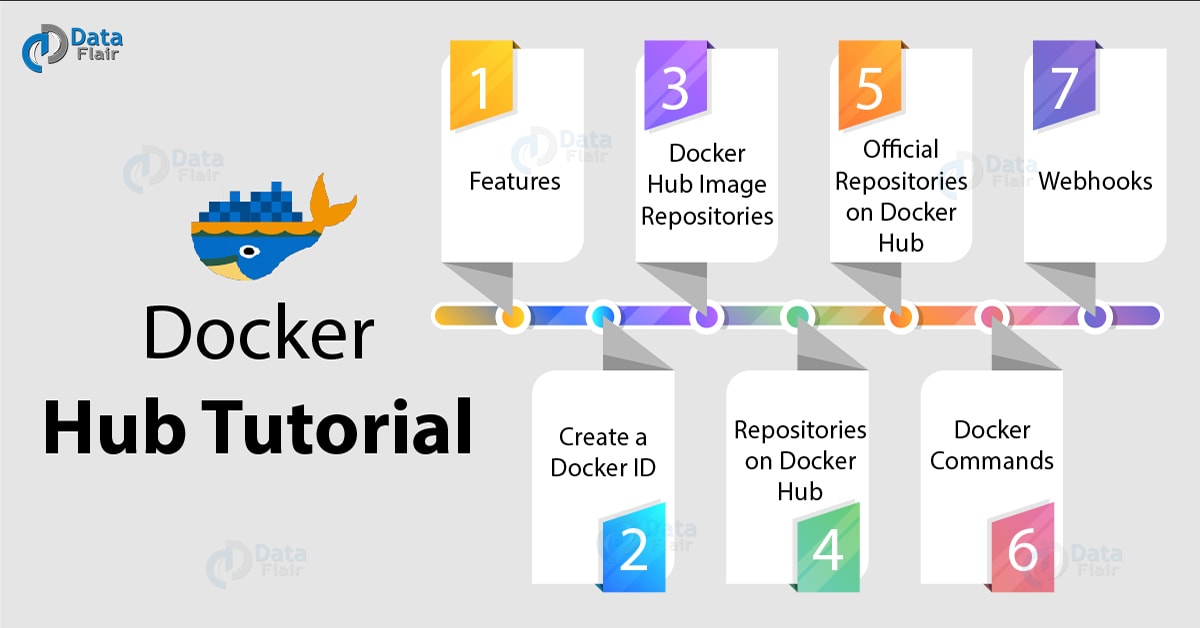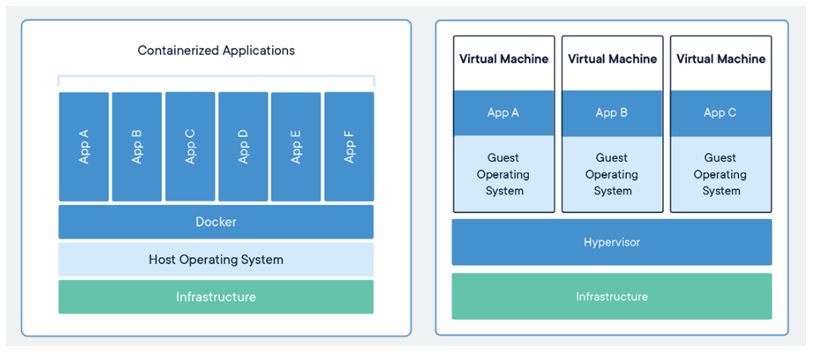- Download Image From Docker Hubspot
- How To Download Docker Image From Docker Hub Offline
- Download Image From Docker Hubble
- Download Image From Docker Hub Without Docker
Here, jenkins is the name of the image we want to download from Docker hub and install on our Ubuntu machine.p is used to map the port number of the internal Docker image to our main Ubuntu server so that we can access the container accordingly. The Docker menu in the top status bar indicates that Docker Desktop is running, and accessible from a terminal. If you've just installed the app, Docker Desktop launches the onboarding tutorial. The tutorial includes a simple exercise to build an example Docker image, run it as a container, push and save the image to Docker Hub.
- Docker Tutorial
- Docker Useful Resources
- Selected Reading
Docker Hub is a registry service on the cloud that allows you to download Docker images that are built by other communities. You can also upload your own Docker built images to Docker hub. In this chapter, we will see how to download and the use the Jenkins Docker image from Docker hub.
The official site for Docker hub is − https://www.docker.com/community-edition#/add_ons

Step 1 − First you need to do a simple sign-up on Docker hub.
Step 2 − Once you have signed up, you will be logged into Docker Hub.
Step 3 − Next, let's browse and find the Jenkins image.
Step 4 − If you scroll down on the same page, you can see the Docker pull command. This will be used to download the Jenkins image onto the local Ubuntu server.
Step 5 − Now, go to the Ubuntu server and run the following command −
To run Jenkins, you need to run the following command −
Note the following points about the above sudo command −
We are using the sudo command to ensure it runs with root access.
Here, jenkins is the name of the image we want to download from Docker hub and install on our Ubuntu machine.
-p is used to map the port number of the internal Docker image to our main Ubuntu server so that we can access the container accordingly.
You will then have Jenkins successfully running as a container on the Ubuntu machine.
Estimated reading time: 3 minutes
Download Image From Docker Hubspot
Docker Desktop for Mac is the Community version of Docker for Mac.You can download Docker Desktop for Mac from Docker Hub.
By downloading Docker Desktop, you agree to the terms of the Docker Software End User License Agreement and the Docker Data Processing Agreement.
System requirements
Your Mac must meet the following requirements to successfully install Docker Desktop:
macOS must be version 10.14 or newer. That is, Mojave, Catalina, or Big Sur. We recommend upgrading to the latest version of macOS.
If you experience any issues after upgrading your macOS to version 10.15, you must install the latest version of Docker Desktop to be compatible with this version of macOS.
Note
Docker supports Docker Desktop on the most recent versions of macOS. That is, the current release of macOS and the previous two releases. As new major versions of macOS are made generally available, Docker stops supporting the oldest version and supports the newest version of macOS (in addition to the previous two releases). Docker Desktop currently supports macOS Mojave, macOS Catalina, and macOS Big Sur.
At least 4 GB of RAM.
VirtualBox prior to version 4.3.30 must not be installed as it is not compatible with Docker Desktop.
What's included in the installer
How To Download Docker Image From Docker Hub Offline
The Docker Desktop installation includes Docker Engine, Docker CLI client, Docker Compose, Notary, Kubernetes, and Credential Helper.
Install and run Docker Desktop on Mac
Double-click
Docker.dmgto open the installer, then drag the Docker icon to the Applications folder.Double-click
Docker.appin the Applications folder to start Docker. (In the example below, the Applications folder is in 'grid' view mode.)The Docker menu in the top status bar indicates that Docker Desktop is running, and accessible from a terminal.
If you've just installed the app, Docker Desktop launches the onboarding tutorial. The tutorial includes a simple exercise to build an example Docker image, run it as a container, push and save the image to Docker Hub.
Click the Docker menu () to seePreferences and other options.
Select About Docker to verify that you have the latest version.
Congratulations! You are now successfully running Docker Desktop.
If you would like to rerun the tutorial, go to the Docker Desktop menu and select Learn.
Download Image From Docker Hubble
Automatic updates
Starting with Docker Desktop 3.0.0, updates to Docker Desktop will be available automatically as delta updates from the previous version.
When an update is available, Docker Desktop automatically downloads it to your machine and displays an icon to indicate the availability of a newer version. All you need to do now is to click Update and restart from the Docker menu. This installs the latest update and restarts Docker Desktop for the changes to take effect.
Uninstall Docker Desktop

Step 1 − First you need to do a simple sign-up on Docker hub.
Step 2 − Once you have signed up, you will be logged into Docker Hub.
Step 3 − Next, let's browse and find the Jenkins image.
Step 4 − If you scroll down on the same page, you can see the Docker pull command. This will be used to download the Jenkins image onto the local Ubuntu server.
Step 5 − Now, go to the Ubuntu server and run the following command −
To run Jenkins, you need to run the following command −
Note the following points about the above sudo command −
We are using the sudo command to ensure it runs with root access.
Here, jenkins is the name of the image we want to download from Docker hub and install on our Ubuntu machine.
-p is used to map the port number of the internal Docker image to our main Ubuntu server so that we can access the container accordingly.
You will then have Jenkins successfully running as a container on the Ubuntu machine.
Estimated reading time: 3 minutes
Download Image From Docker Hubspot
Docker Desktop for Mac is the Community version of Docker for Mac.You can download Docker Desktop for Mac from Docker Hub.
By downloading Docker Desktop, you agree to the terms of the Docker Software End User License Agreement and the Docker Data Processing Agreement.
System requirements
Your Mac must meet the following requirements to successfully install Docker Desktop:
macOS must be version 10.14 or newer. That is, Mojave, Catalina, or Big Sur. We recommend upgrading to the latest version of macOS.
If you experience any issues after upgrading your macOS to version 10.15, you must install the latest version of Docker Desktop to be compatible with this version of macOS.
Note
Docker supports Docker Desktop on the most recent versions of macOS. That is, the current release of macOS and the previous two releases. As new major versions of macOS are made generally available, Docker stops supporting the oldest version and supports the newest version of macOS (in addition to the previous two releases). Docker Desktop currently supports macOS Mojave, macOS Catalina, and macOS Big Sur.
At least 4 GB of RAM.
VirtualBox prior to version 4.3.30 must not be installed as it is not compatible with Docker Desktop.
What's included in the installer
How To Download Docker Image From Docker Hub Offline
The Docker Desktop installation includes Docker Engine, Docker CLI client, Docker Compose, Notary, Kubernetes, and Credential Helper.
Install and run Docker Desktop on Mac
Double-click
Docker.dmgto open the installer, then drag the Docker icon to the Applications folder.Double-click
Docker.appin the Applications folder to start Docker. (In the example below, the Applications folder is in 'grid' view mode.)The Docker menu in the top status bar indicates that Docker Desktop is running, and accessible from a terminal.
If you've just installed the app, Docker Desktop launches the onboarding tutorial. The tutorial includes a simple exercise to build an example Docker image, run it as a container, push and save the image to Docker Hub.
Click the Docker menu () to seePreferences and other options.
Select About Docker to verify that you have the latest version.
Congratulations! You are now successfully running Docker Desktop.
If you would like to rerun the tutorial, go to the Docker Desktop menu and select Learn.
Download Image From Docker Hubble
Automatic updates
Starting with Docker Desktop 3.0.0, updates to Docker Desktop will be available automatically as delta updates from the previous version.
When an update is available, Docker Desktop automatically downloads it to your machine and displays an icon to indicate the availability of a newer version. All you need to do now is to click Update and restart from the Docker menu. This installs the latest update and restarts Docker Desktop for the changes to take effect.
Uninstall Docker Desktop
To uninstall Docker Desktop from your Mac:
- From the Docker menu, select Troubleshoot and then select Uninstall.
- Click Uninstall to confirm your selection.
Important
Uninstalling Docker Desktop destroys Docker containers, images, volumes, andother Docker related data local to the machine, and removes the files generatedby the application. Refer to the back up and restore datasection to learn how to preserve important data before uninstalling.
Download Image From Docker Hub Without Docker
Where to go next
- Getting started provides an overview of Docker Desktop on Mac, basic Docker command examples, how to get help or give feedback, and links to other topics about Docker Desktop on Mac.
- Troubleshooting describes common problems, workarounds, howto run and submit diagnostics, and submit issues.
- FAQs provide answers to frequently asked questions.
- Release notes lists component updates, new features, and improvements associated with Docker Desktop releases.
- Get started with Docker provides a general Docker tutorial.
- Back up and restore data provides instructionson backing up and restoring data related to Docker.
